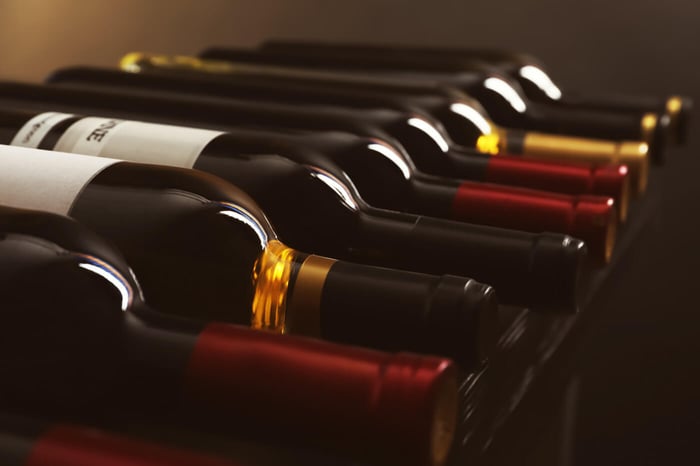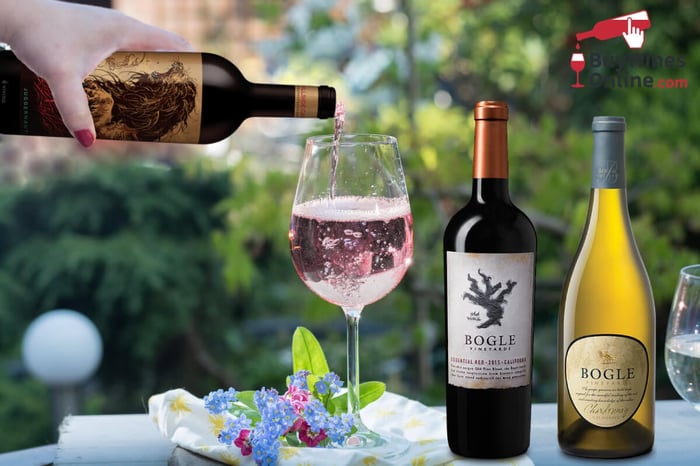Wine Tasting 101:
Wine Tasting Tips for Beginners

Let’s lay it all on the table: wine tasting can be a little intimidating if you aren’t exactly sure what you’re looking for; but it doesn’t have to be. Regardless of whether you’re just beginning your journey into wine or are a wine lover already, the best way to appreciate wine is knowing how to correctly taste it; so welcome to Wine Tasting 101. Tasting wine is fun, and it’s a great opportunity to socialize with other wine enthusiasts. Enjoy our wine tasting guide and make sure to check out some of our wine tasting tips for beginners!
Holding a Wine Glass
Before you even get to the bottle of wine, you have to learn how to properly hold a wine glass. The most common way to hold a stemmed wine glass is to grip the glass by the stem between your forefinger, thumb and middle finger (pictured below).

The glass should comfortably lay between your thumb, forefinger and middle.
You can hold the glass of wine any way that you like; but if you're actively wine tasting than holding it this way has an advantage. If you're holding a wine glass that is stemmed or stemless, gripping the bowl of the glass in your hands (like below), you can affect the temperature of the wine with your body-heat -- potentially and unintentionally altering the flavor of the wine.

Wine Tasting Breakdown
Tasting wine can be broken down into 4 steps: Look, Smell, Taste, Ponder/Think. This process is practiced by wine experts and sommeliers to improve their wine tasting ability and flavor profile. The truth of the matter is that anyone can taste wine, you just need some wine and a little imagination.
Here are the 4 steps further broken down:
Look: A visual observation of the wine under correct lighting
We look at a wine to get a sense of its color, as this can tell you a lot about how the wine was made. The color of a wine comes from contact with the wine grape skins after the grapes have been juiced. The longer the skins are kept in contact with the juice, the deeper the color of the wine will be.
For White Wine: Look at the shade of the wine. Is the color of the wine leaning towards a pale and bright yellow, or is it a full deep color more closely resembling gold? Bright white wines are typically crisp and refreshing, full of mineral flavors and have not been aged for long. If the wine is deeper in color as well as darker, it is an indicator that it has been aged in oak barrels. The flavor profile of the wine will be deeper and more full-bodied.
For Red Wine: The process for looking at red wine is the same as white. Begin by examining the shade of the red wine in the glass. Similar to white, if the color of the red wine leans towards pink or light red, it should have a taste profile that is fruity, light, and potentially tart as well. As the shade of red wine gets darker, towards shades of violet and ruby, the flavor profile of the wine will become a lot bolder and richer. These dark reds also bring rise to the mouth-puckering tannins that pair so perfectly with a delicious steak dinner. Typically, the longer a red wine spends aging in oak, the deeper and bolder the color of the wine will be.

Smell: An examination of the wine’s aroma, or ‘nose’
Smell is often underestimated when people think about wine tasting, which is a big mistake! The nose and our olfactory abilities play a vital role in both tasting and smelling wine; the human nose has the ability to differentiate between thousands of different scents, while the tongue can only pick up sweet, bitter, salty, and sour. Our noses are key in picking up those flavors when we take a sip of any wine, and the smells can be diverse.
How to Smell A Wine
First thing’s first, give the wine a swirl in your glass for around 5-10 seconds with effort. Swirling the glass slightly aerates the wine, helping to release the aromas and scents towards your nose. After swirling, put your nose into the glass and inhale. What can you pick up on your first few inhales? Smells of fruit, citrus, floral, earthy and many other flavors are common depending on different factors of the wine.
Taste: Using our mouth and tongues to examine the flavors of the wine
Tasting wine can be broken down into three subcategories: Taste, Texture, and Length
As said previously, our tongue is limited to just four tastes: salty, sweet, sour and bitter. Almost every wine is going to have a component of sour, since fermented grapes will lean more towards acidic.
The taste of a wine is greatly affected by climate and grape type. Other wines are known for their bitterness, while some are known for their natural sweetness.
The length of a wine describes how long the taste of a wine remains in your mouth after you swallow. It can be described as short, medium, or long. Generally, a long length in a wine is considered a sign of high quality. When your tongue touches the wine, it will interpret its texture.
The texture of a wine is related to the alcohol content of the wine along with how long it has ripened for. The texture of a wine can vary based on how a wine is classified: light-bodied, medium-bodied, or full-bodied. Pay attention to how different wines affect your tongue. While you taste, Think about the flavors of the wine and what comes to mind.
Below I've included a list of different types of wines along with their usual texture.
Light-Bodied Red Wines: Chianti, Rioja, Bordeaux, Pinot Noir
Light-Bodied White Wines: Sauvignon Blanc, Soave, Pinot Grigio
Medium-Bodied Red Wines: Bordeaux, Zinfandel, Cabernet Sauvignon, Barbera, Merlot, Malbec, Shiraz Medium-Bodied White Wines: Sancerre, Sauvignon Blanc, Chardonnay
Full-Bodied Red Wines: Barbaresco, Cabernet Sauvignon, Zinfandel, Malbec, Chateauneuf-du-Pape
Full-Bodied White Wines: Chardonnay, Viognier

Tip: Some of the best tasting wines for beginners are easy drinking wines like Moscato, Pinot Grigio, or if you're seeking a red, Cabernet Sauvignon or Zinfandel
Here is an example of a typical wine tasting would look like for Bonanza Cabernet Sauvignon Lot 3
Look: The wine is a dark plum color
Smell: Scents of blueberry, vanilla, spices and secondary aromas of cedar
Taste: Bold dark fruit flavors, semi-dry with a jammy mouth feel and dark tannins
I hope that you've enjoyed this tasting wine guide and all of its content about wine tasting etiquette and tasting strategy. The truth is, anyone can taste wine with a little practice; wine tasting for beginners isn't as hard as it's made out to be, so get out there and pop your first cork!




